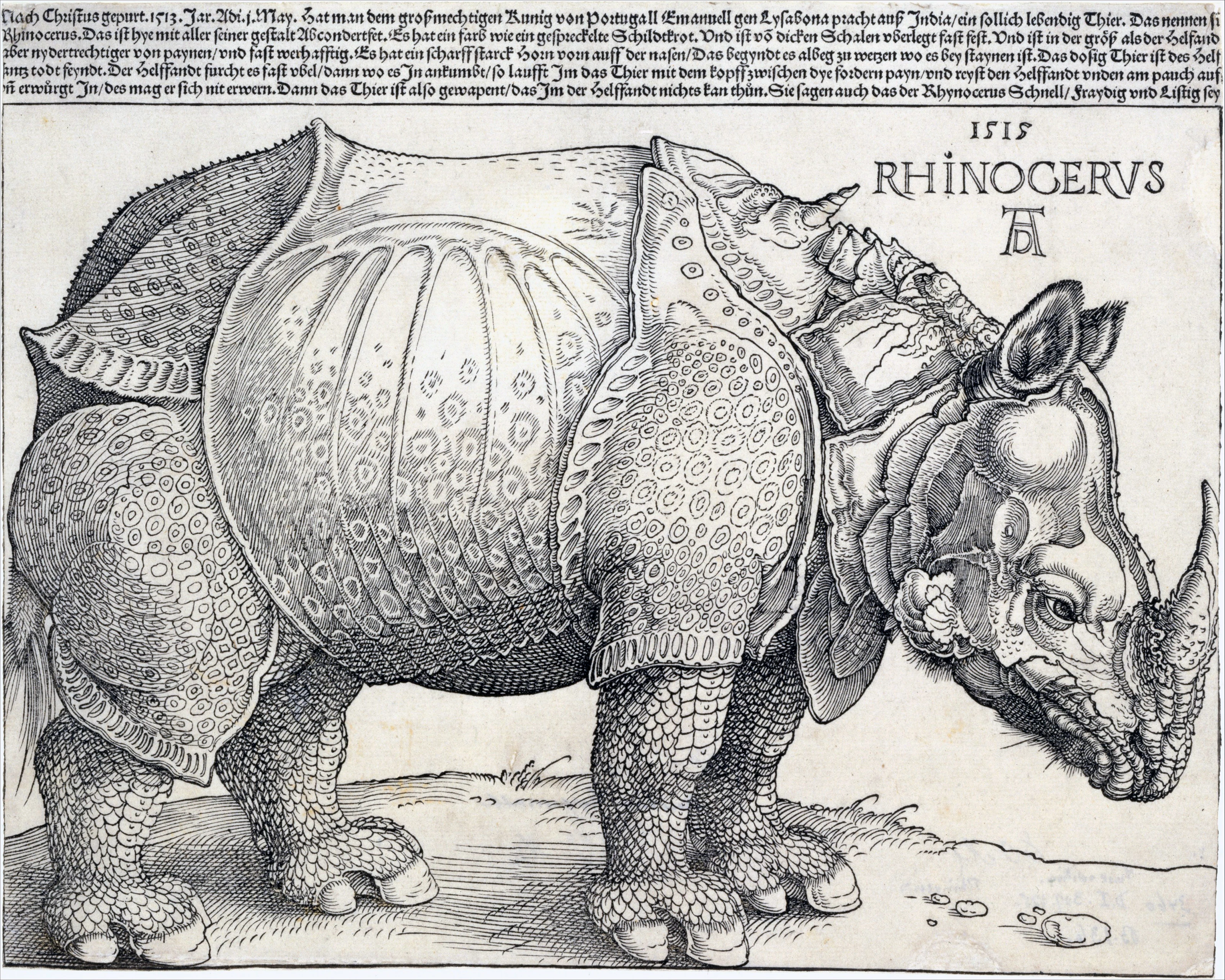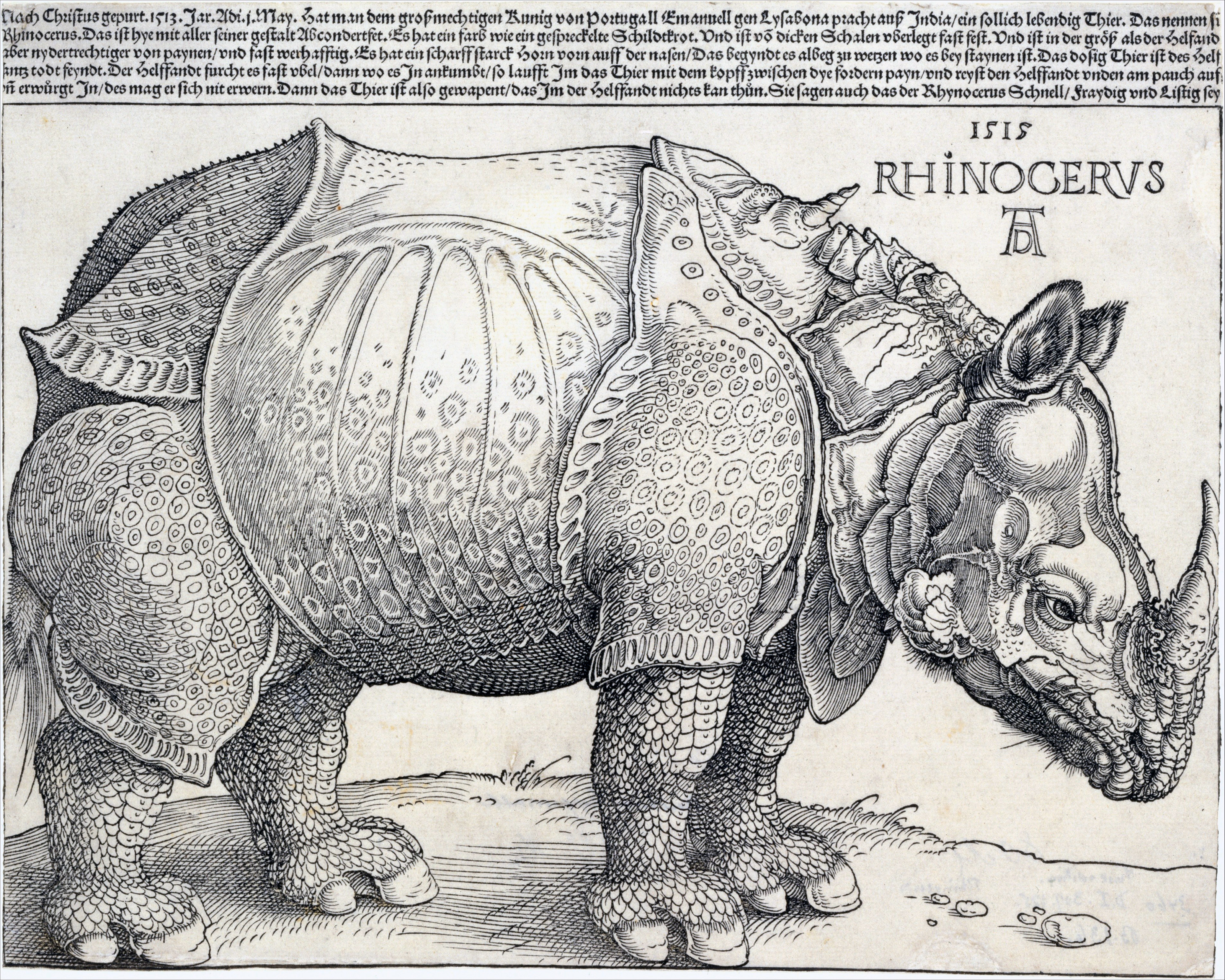


Dürer based his woodblock print of a Rhinoceros on a written account and drawing of an Indian rhinoceros that had been brought to Lisbon. Dürer had never seen a rhinoceros in person, and while his woodcut was not anatomically accurate, it was boldly imaginative, and became the de facto representation of the animal until the late 18th century. The German inscription on the print is taken from Pliny’s description:
“On the first of May in the year 1513 AD, the powerful King of Portugal, Manuel of Lisbon, brought such a living animal from India, called the rhinoceros. This is an accurate representation. It is the colour of a speckled tortoise, and is almost entirely covered with thick scales. It is the size of an elephant but has shorter legs and is almost invulnerable. It has a strong pointed horn on the tip of its nose, which it sharpens on stones. It is the mortal enemy of the elephant. The elephant is afraid of the rhinoceros, for, when they meet, the rhinoceros charges with its head between its front legs and rips open the elephant’s stomach, against which the elephant is unable to defend itself. The rhinoceros is so well-armed that the elephant cannot harm it. It is said that the rhinoceros is fast, impetuous and cunning.”
